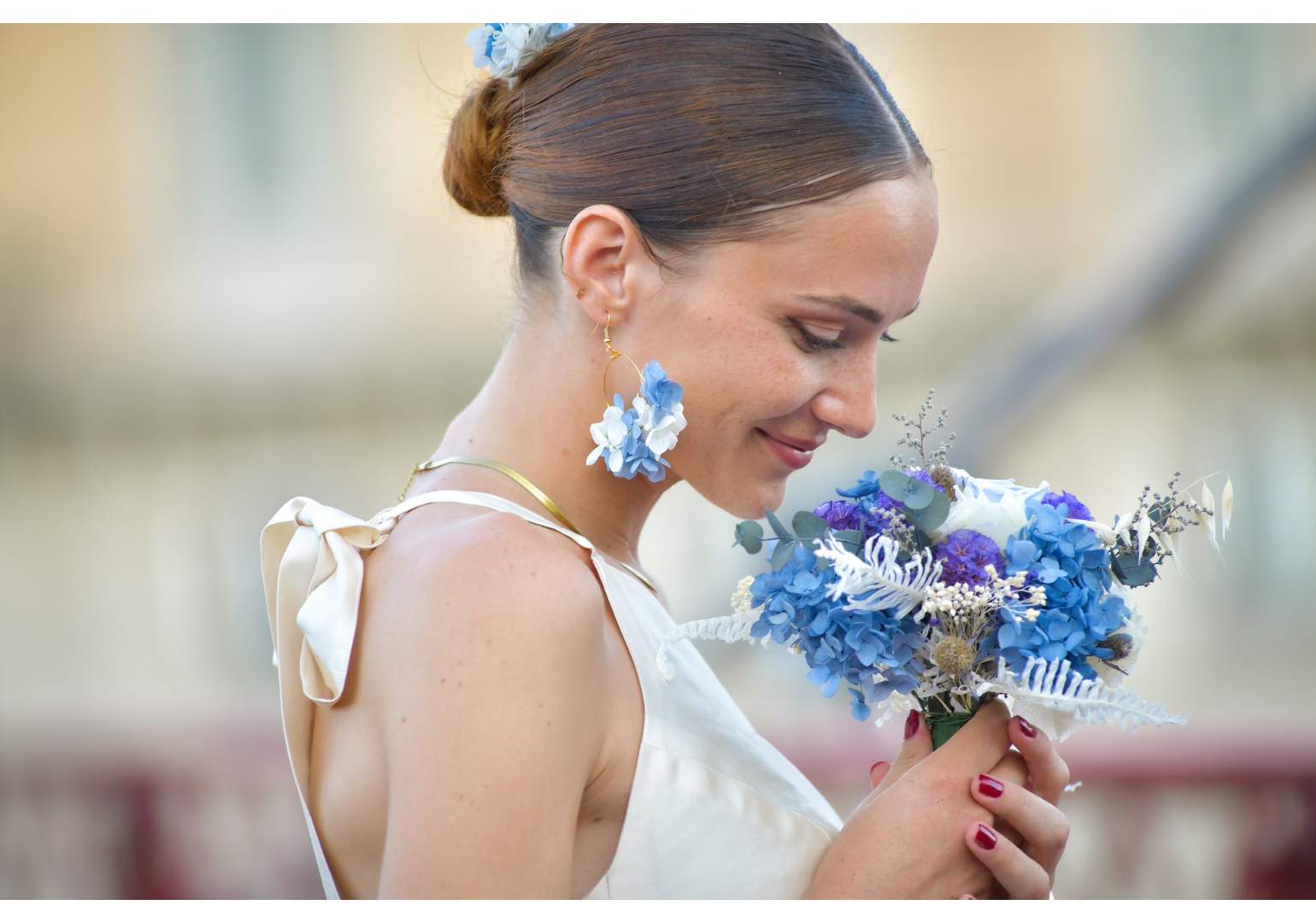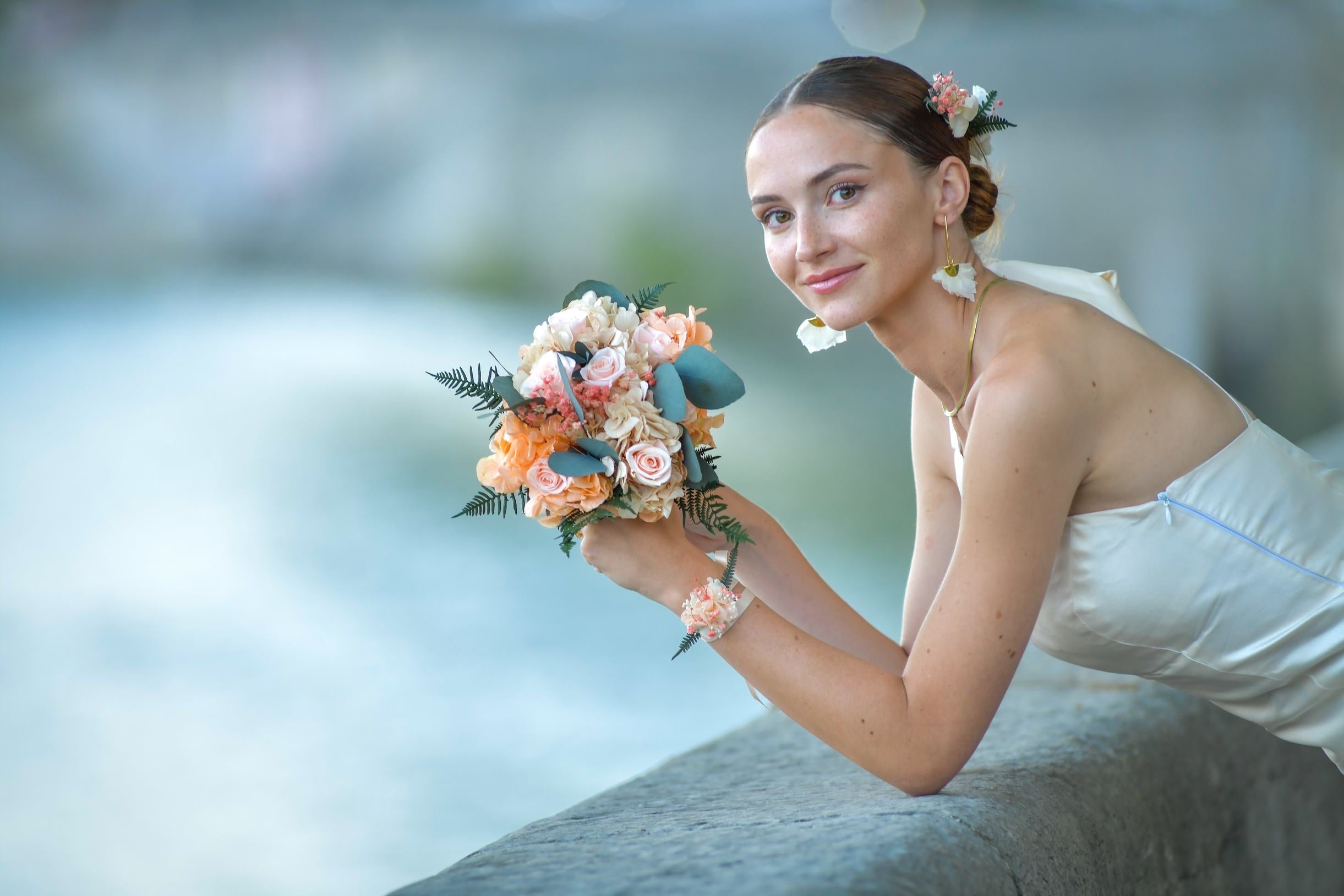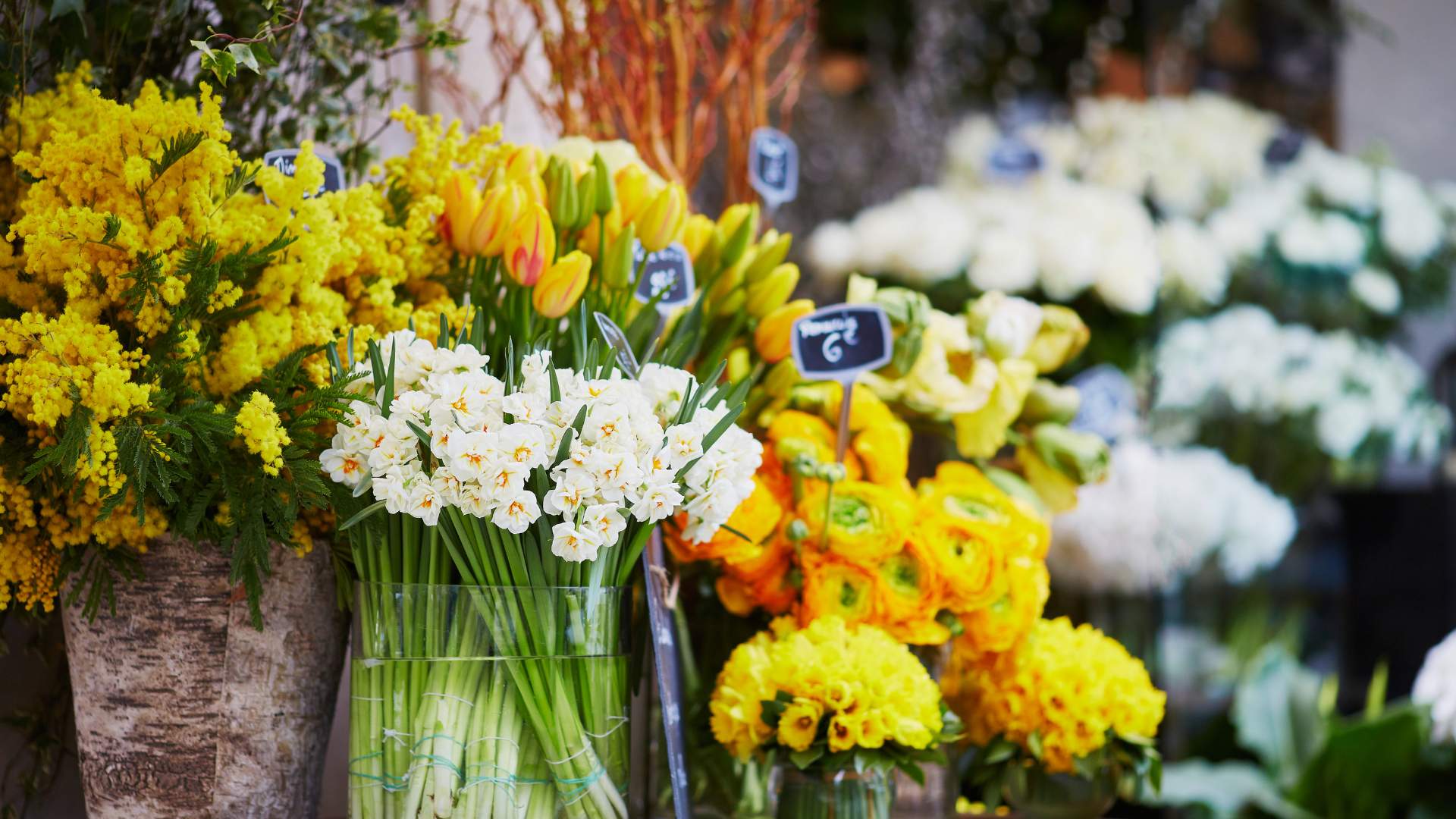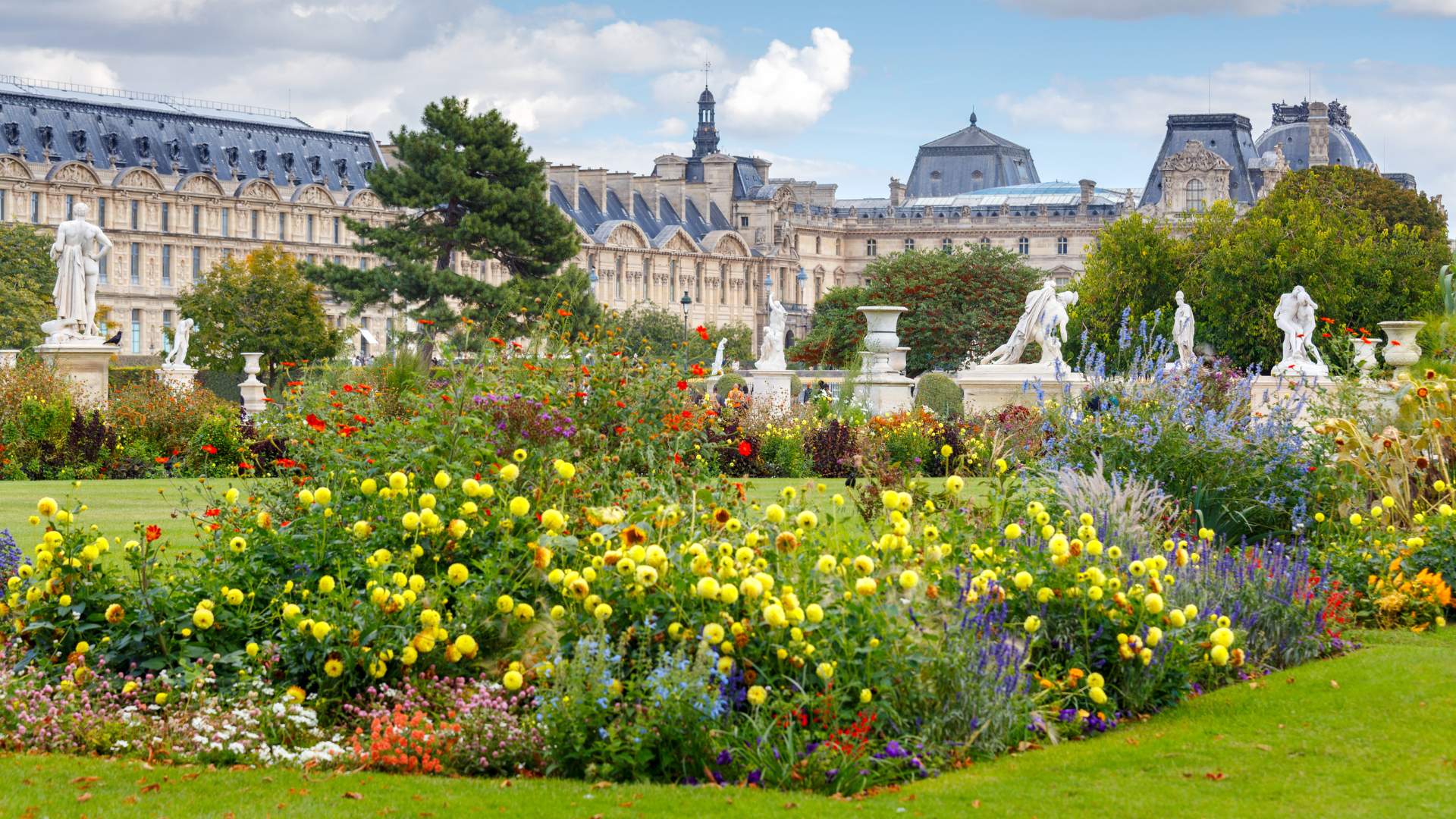Introduction
Flower arrangement in Japan is called ikebana and dates back to the 7th century. The Japanese style of flower arrangement is characterized by simplicity and minimalism. I remember that during my classes in Japan, my teacher Koseku-sensei would tell me: "Thibaut-san, simple is beautiful: cut, cut, cut!" I would spend 20 minutes arranging the flowers, and 30 minutes simplifying the arrangement by cutting leaves one by one with pruning shears. Ikebana also incorporates several other aesthetics such as asymmetry and intuition. This is very present in many arts in Japan, and very different from the West and France where symmetry and reason are more emphasized (the famous "I think therefore I am" by Descartes).
 an ikebana made in Japan with master Koseku
an ikebana made in Japan with master Koseku
Ikebana is an art form that has its roots in Buddhism, but it is not exclusive to this religion: anyone can try their hand at flower arranging! There are many schools of ikebana, with different styles and philosophies. The one I practiced in Japan and which is offered at IKI is the Sogetsu family. All schools have one thing in common: creating a Japanese flower arrangement is a way to refocus and commune with nature . If you would like to learn more about this practice, sign up for our ikebana workshops taught by Master Yuko!
Flower arrangement in Japan is called ikebana and dates back to the 7th century.
Flower arrangement in Japan is called ikebana and dates back to the 7th century. The word ikebana means "living flowers," and it is an art form practiced in Japan and other parts of Asia.
While many of us are familiar with Western flower arrangements, ikebana has a much longer history, dating back centuries before European settlers brought their own traditions to America. In fact, there are several distinct styles of Japanese flower arrangement; each region has its own schools that teach students how to arrange flowers according to particular customs.
The Japanese style of flower arrangement is characterized by simplicity and minimalism.
It usually contains a few flowers, all chosen for their purity, softness, and elegance. This can be seen in arrangements used for tea ceremonies (sadō). The most common flowers used for these types of arrangements are:
-
the "Ichigo" or "strawberry" lilies.
-
Kiku or chrysanthemum (pictured below)
-
Nadeshiko or pink rosebuds

Japanese floral arrangements are found in homes, but also in temples and other places of worship.
In Japan, ikebana is found in homes and other places of worship. It is also used in temples, shrines, and other places of worship. Ikebana is present daily in Japanese homes as part of ancestor worship rituals. The flower arrangement symbolizes celebration and gratitude for loved ones who have passed away.
Ikebana has become an art form in Japan and an important aspect of Japanese culture. In fact, it has been recognized by UNESCO as an intangible cultural heritage site since 2013!
Ikebana is an art that has its roots in Buddhism.
Ikebana is an art form with its roots in Buddhism. Its name is believed to come from the combination of two Japanese words: "ike," meaning "to live," and "hana," meaning "flower." It is said that Ikebana was first practiced by monks as a way to express their spirituality and commune with nature. The monks used simple materials such as grasses, mosses, and leaves that they found during their meditative walks and brought back to their temples to create beautiful arrangements that helped them focus on their inner selves. This tradition has continued over time to the present day, where you can see these same principles reflected in many home gardens in Japan!
There are many schools of ikebana with different styles and philosophies.
There are many schools of ikebana with different styles and philosophies. The best known in France are Ikenobo, Ohara, and Sōgetsu, proposed by Master Yuko at IKI de Veyrac. Each style is influenced by the artist's personality and background, as well as by the season and available flowers. Some schools are more traditional, others more modern. The Sogetsu school was founded in 1927 by Teshigahara Sofu and is based on the idea that flower arrangements can be created anywhere, by anyone, at any time, and with any material. The basic principle of Sogetsu is also very simple: "Ikebana reflects the person who composed it."
Making a Japanese flower arrangement is a way to express one's spirituality and commune with nature.
What is Japanese flower arrangement?
Japanese flower arrangement is a form of meditation. For the Japanese, it's a way to express their spirituality and commune with nature. When you slow down and focus on what you're doing, it helps clear your mind and can be very relaxing! There's also the satisfaction of having managed to create a harmonious, original, and unique arrangement, with the help of the master.
For those interested in learning more about the history and significance of this art form, there are many books that can help you better understand the concepts. Taking a first class with Master Yuko also allows you to get a feel for what makes it an art in its own right, with its codes and rules to get us moving.
Ikebana is believed to symbolize the union between heaven (represented by flowers), man, and earth.
Ikebana is a Japanese art form that involves arranging flowers in a vase or other container. It is also considered a spiritual act, as it symbolizes the union between heaven (represented by flowers), man, and the earth.
Ikebana was created by Zen Buddhist monks during the 14th century, who developed their own creative methods based on their understanding of nature. The first school of ikebana appeared in Japan during this time, along with tea ceremonies—two typical aspects of Japanese culture that still exist today!

an ikebana made in Lyon with master Yoku
The practice of flower arrangement has its origins in the Buddhist tradition of offerings before altars.
Japanese flower arranging is a centuries-old art form that originates from the Buddhist tradition of altar offerings. Floral arrangements are created by creating various arrangements using flowers, bamboo, and other materials.
Flower arranging is a way to express one's spirituality and connect with nature. It's also a meditative practice because it allows one to slow down, clear one's mind, and focus on what one is doing.
Creating a Japanese flower arrangement allows you to slow down, clear your mind, and focus on what you are doing.
Creating a Japanese flower arrangement allows you to slow down, clear your mind, and focus on what you are doing.
There's something very calming about creating a beautiful floral arrangement. It's like clearing all the negative energy from your body and replacing it with positive energy.
Once, while arranging flowers for a client, I felt my pulse slow down, my gaze become clear and focused, and my mental state relax as well. It was incredible!
If you want to learn about Japanese culture, a flower arranging workshop is perfect!
If you want to learn more about Japanese culture, this isn't a bad place to start! Ikebana is the name for the traditional Japanese style of flower arrangement. It's traditionally done with simple, natural materials, such as branches and leaves of plants native to Japan, but modern ikebana also incorporates more advanced techniques, such as stringing flowers together.
This art form has its roots in Buddhism; it was originally used by monks as part of their daily meditation and prayer routine. Over time, however, the practice evolved into an expression of artistic talent rather than spiritual loyalty. Today, you'll find many schools of ikebana with different styles and philosophies (some more complex than others).
Conclusion
In this article, we've covered everything you need to know about Japanese flower arrangements. If you'd like to learn more about this art form, the best thing to do is try it out in our workshops with Master Yuko!








